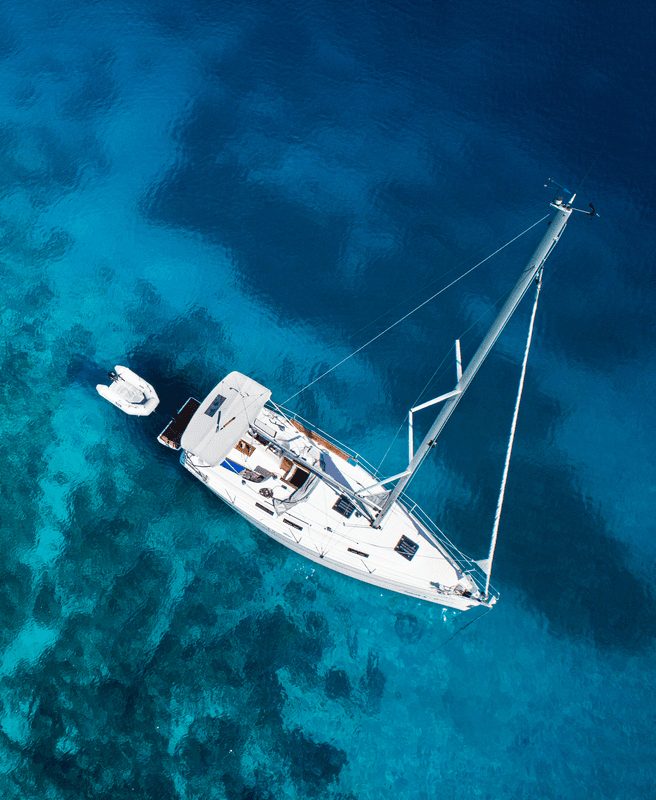Panama-Friendly Nations Visa: Read The Ultimate Guide
June 11, 2024
Update May 2021: The last day to apply for the Panama Friendly Nations Visa is August 1, 2021, at which time the program will be closed. It will be replaced with a $300,000 investment program.
Dateline: Tivat, Montenegro
What Is The Panama Friendly Nations Visa?
We first wrote about the Panama Friendly Nations Visa back in 2013, shortly after the program came into existence. While there was little to judge the program by at the time, we felt it was exactly the kind of program a country should implement.
The program has been nothing short of popular.
Having a second residence, in general, offers a number of benefits including the chance to relieve yourself of tax obligations in your home country. Panama offers this and more for international citizens and location-independent entrepreneurs. The program’s low costs and low barriers to entry have attracted folks from dozens of countries looking to cash in on those benefits.
But the Panama Friendly Nations Visa is not for everyone. Despite its popularity, Panama’s fast-track to a provisional residence is not the panacea many claims it to be. It may be part of the solution for you, but Panamanian residence is not a shiny remedy in a bottle anyone can pull off the shelf at the store and take to get rid of all of their headaches.
In fact, if you don’t plan properly, it could make your headaches worse.
As with any residency program, you need to understand how residence in Panama would fit into a holistic, personalized strategy. You will need professional help to do this, but you can always start by scoping out the program for yourself. Here at Nomad Capitalist, we’re dedicated to helping you with both parts of that equation.
This ultimate guide to the Panama Friendly Nations Visa provides you with the most thorough research on the program available. It covers everything that you need to know, including the program’s drawbacks that must be taken into account — drawbacks that you won’t find discussed on the websites trying to sell you on their one product: Panamanian residence.
If you want to know how Panama’s program compares to the other residence options out there, you can check out these articles to see which program is the best fit for you:

The Perks of Panamanian Residency
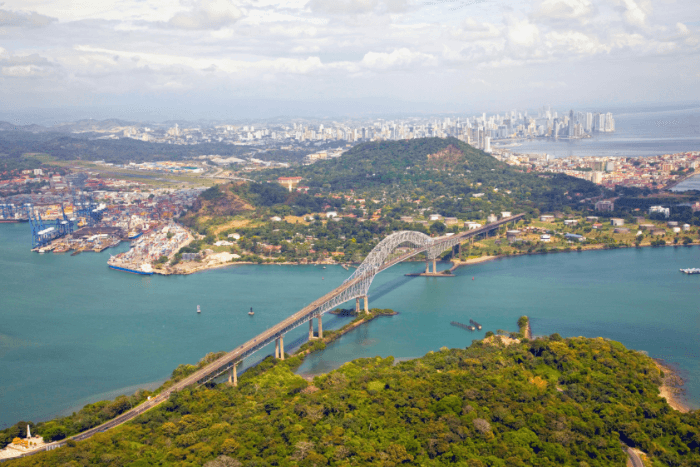
With a population of 4.4 million people and a stable, sovereign democracy, the small Central American country of Panama has quietly forged a path of economic progress and relative peace over the past century in a region that has seen its share of tumult.
1. Nature
While you may not plan to live in Panama long-term, unlike other countries that offer similar residence programs, Panama is a beautiful and convenient place to put down some roots.
Bordered by Colombia and Costa Rica as well as two different oceans, and home to mountains, rainforests, and beaches, Panama is getting more and more international visitors with each passing year.
2. Climate
The tropical climate and the good year-round weather make it easy to get out and enjoy a wide range of outdoor activities, such as hiking, bird watching, rafting, scuba diving and more. Panama’s vibrant native culture, great food, interesting history, and bustling urban life are big attractions, as well.
3. Business
Panama City is an enterprising business hub, sustained by a strong banking industry and the economic lifeblood of the Panama Canal. The country as a whole doesn’t offer a deep talent pool to recruit from like Hong Kong or Singapore do, but the talent is decent and labor costs are relatively cheap. In fact, the cost of living as a whole — though high for the region — is relatively affordable, especially considering that Panama is one of the wealthier countries of Central America.
The country’s pro-business attitude also means that it is open to foreign investment. Rather than resting on the economic prowess of the Panama Canal alone to sustain itself, the government has discovered that opening its doors to the world is the way to thrive. For years, Panama has been a safe haven for those seeking to park capital at the crossroads of North and South America.
4. Location
Panama’s excellent geographic location is another draw for its residency program. Because it is at the crossroads of the Americas, Panama is a great base from which to travel, invest, and do business. You can reach numerous locations throughout Latin America within hours from Panama City’s growing Tocumen International Airport (PTY), which offers daily flights to cities all over the world.
5. Healthcare
And, due in part to its great location and high levels of development, Panama is also a popular destination for medical tourists.
Procedures that cost into the six figures in the US or the UK cost as little as four figures here, all while offering world-class treatment from highly-trained, English-speaking doctors at the best hospitals, many of which partner with major hospitals in North America.
6. Culture
Panama’s modern culture is familiar to many westerners and often makes it easier to assimilate into the culture compared to other popular nomad destinations around the world. The high standard of living is another perk that makes the transition easier for those who are hesitant to take the first step into expat life.
7. Ease of fitting in
Along the same lines, the language barrier isn’t too difficult to overcome. If you’re from the US, then you probably have some experience with Spanish, but even if you don’t, it’s an easy and useful language to learn. And for those who don’t learn it, English is commonly used in business circles in Panama as well.
8. Economy
Overall, Panama’s macroeconomic view is good. The free market is at work and the country shows incredible potential. In fact, we have spoken before about Panama being the future “Singapore of the Americas” because of its rapid development, and many often refer to it as the “Switzerland of the Americas” because of its strong banking industry, too.
If anything, Panama is not a banana republic.
9. Freedom
Panama enjoys all of the freedoms that US persons and other westerners do, from the First Amendment freedoms of the press and free speech to freedom of religion. Private property rights are stronger here than in the United States and the country hasn’t had a central bank since its independence over 100 years ago.
10. Safety
Panama also hasn’t had a standing army for many years. Instead, the country has the Panamanian Public Forces, a barely paramilitary organization that acts as a police force. Panama is safe and has positive relations with the rest of the region and the world.
From its great cities with fast internet to its beautiful culture and stunning views, Panama has a lot of great things going for it. And its residency programs are a perk in and of themselves, with fast, straightforward applications, low costs, and minimal presence requirements.
If you’re looking for an easy second residence in a desirable place to live, Panama may tick many of the boxes you are looking for. And if — like any Nomad Capitalist — you’re looking for a desirable tax situation more than just a nice place to live, Panama could provide the right solution for you as well.
The Tax Benefits of Being a Resident of Panama

If you want to escape the death grip of the tax system in your home country, the low taxes in Panama (or even zero taxes) offer a great alternative.
As a Panamanian resident, you are only obligated to pay tax on income earned in the country thanks to Panama’s system of territorial taxation.
Unlike the tax system in the United States and European countries where citizens have to pay tax on income generated abroad, Panama only taxes what you earn within its borders. Your offshore earnings, foreign investments, and foreign salaries are essentially tax-free.
And for entrepreneurs looking for a warm, tax-friendly place to live, moving to Panama can have a very positive effect on the capital of your company too, especially if you know your way around the tax rules. You don’t have to live on a tiny island somewhere to enjoy a zero-tax lifestyle as an entrepreneur or investor.
Where Panama Gets Its Tax Revenue
While Panama’s residents are required to pay income tax, almost 90% of the population does not pay direct taxes because the first $11,000 of taxable income is exempt from taxation. And, since most residents who earn a higher income only make money outside of the country, Panama does not collect a large amount of income tax.
This begs the question: where does Panama get its tax revenue?
The government of Panama gets the majority of its tax revenue from the VAT, which is set at 7% for basically every item that is sold in the country. Certain accommodations are charged a special rate of 10% and alcohol is taxed at a rate of 15%.
Whether you’re eating dinner at Panama City’s Hard Rock Hotel or hiring a lawyer to set up a Panama foundation, you’ll pay VAT on almost every purchase, and that money supports a good deal of the government’s programs. Funny how such a small VAT, at least compared to Europe, can support the government.
Of course, Panama also generates a large amount of revenue from import duties collected from the famous Panama Canal linking the Pacific and Atlantic Oceans. This is one of the reasons Panama can afford to keep taxes relatively low.
However, if you operate a physical products company, you can do so from the second-largest free-trade zone in the world — The Colón Free Trade Zone that stretches along the entire Panama Canal — and enjoy shipping from a port free of customs charges and other taxes.
Panama’s Tax Rates
You will have to pay some income tax in Panama if you technically run your business from the country, or if you’re working in the country as an employee. Luckily for you, the income tax isn’t very high and the system is kept fairly simple.
As stated, any income earned under $11,000 is exempt from taxation. You will need to pay 15% income tax for anything you earn between $11,000 and $50,000, and income over $50,000 is taxed at a rate of 25%.
There is no capital gains tax and no inheritance or wealth taxes, but there is a small withholding tax of 5% on foreign revenue from a Panamanian company and 10% on dividends distributed out of domestic profits. If interest and royalties are paid to a non-resident, the withholding tax rate increases to 12.5%.
Real Estate Taxes in Panama
Buying real estate in Panama can be profitable if you pick the right properties, especially in Panama City and the expat and tourist hotspots. Property prices in these areas have been going up significantly, with the stable economy as its most important booster.
Although Panama does not tax bank interest or income earned abroad, investing in real estate does require you to pay some tax. However, real estate taxes are not always due immediately, and capital gains taxes are only 10%.
One of the best things about Panama is how benefits tend to stack on top of each other. As if a hot, high-yield real estate market wasn’t enough, owning real estate in Panama is one of the ways to qualify for the Panama Friendly Nations visa, but we’ll get to that in a minute.
If you choose to move to Panama and live in your property, you won’t be required to pay any import taxes on interior items for your real estate in the first twenty years. The minimum amount to qualify for most government programs and visas is quite low, so unlike countries like Thailand or Malaysia, there is no formal minimum investment.
If, however, you choose to rent your property out, any rental income generated will be taxable at progressive rates of up to 27%. Most investors won’t see the highest bracket because it starts at $250,000 in income, and you can deduct municipal and national taxes, depreciation losses and maintenance, and administration costs from your income.
How to Capitalize on Panama’s Tax System
If structured properly, most individuals can live in Panama and avoid paying taxes anywhere. Because Panama does not have any CFC rules, you can set up an offshore company (i.e. non-Panamanian) and hire yourself as an employee-owner. Since that income is considered foreign-sourced (because it is not generated by a Panamanian business), it will not be taxable in Panama.
You wouldn’t even need to report it to the Panamanian Revenue Agency.
Things get a little sticky if you use your Panamanian company while in Panama, even if you are only generating money abroad. However, if the central management of the company is exercised outside of Panama, it will be considered a non-resident company and enjoy the same tax advantages.
Structuring your tax situation when two or more countries and tax systems are involved can get complicated, especially if you’re a US citizen, but Panama is one of the most flexible countries in the world and makes it relatively easy to live tax-free as a Panamanian resident.
An Overview of Panama’s Residence Programs
While the Panama Friendly Nations Visa is the most well-known and easiest residence program available in Panama, it is not the only one. In fact, Panama offers one of the largest varieties of residence programs around. If you do not qualify for the Panama Friendly Nations Visa, you may find one of the following programs appealing:
- • The Reforestation Investor Visa ($80,000 minimum investment in five hectares of a certified reforestation project)
• The Pensionado (Retiree) Visa ($1000 minimum monthly pension) - • The Economic Self Solvency Visa ($300,000 minimum investment in real estate and/or a Panamanian bank term deposit account)
• The Business Investor Visa ($160,000 minimum investment in a Panamanian business)
• The Panama Agricultural Investor Program ($60,000 minimum investment in an agricultural business)
Panama also offers the regular residence programs available in most countries, such as residence through marriage to a Panamanian or even being a parent of a child born in Panama. If you don’t meet one of these qualifications and, like me, you are not a citizen of one of the 50 Friendly Nations, the programs listed above are your best route toward Panamanian residence.
Additionally, if you plan to renounce your US citizenship, you may not be able to keep your Panama Friendly Nations Visa after you renounce – unless you choose to get Panamanian citizenship first. As such, it may be better for you to apply for your Panama residence permit via one of these other programs from the very beginning.
Now, let’s take a deep dive into the Panama Friendly Nations Visa and examine what it is, who qualifies, how it works, and how to get one.
The Guide to the Panama Friendly Nations Visa
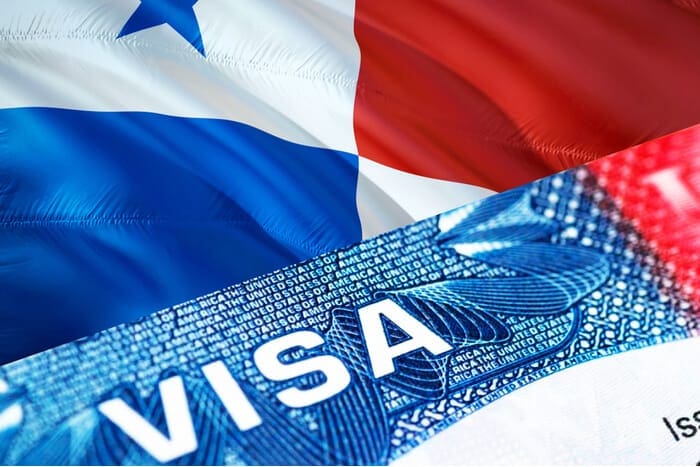
The History
In May of 2012, the Panamanian government passed Executive Order 343, which stated that citizens of 22 friendly nations with professional and economic ties with the Republic of Panama could apply for a fast-track provisional residence in the country. Subsequent orders increased the number of qualifying countries to 50.
To qualify for the Panama Friendly Nations Visa, you need to:
- Be a national of one of the qualifying 50 countries
- Establish economic or professional ties with the Republic of Panama
- Show proof of financial solvency
- Provide the required supporting documentation
- Pay all required fees
List of Qualifying Panama Visa Friendly Nations
Nationals (which can mean residents as well as citizens) of the following 50 countries account for the Friends of Panama visa and can apply for residence in Panama via the Friendly Nations program:
- Andorra
- Argentina
- Australia
- Austria
- Belgium
- Brazil
- Canada
- Chile
- Costa Rica
- Croatia
- Cyprus
- Czech Republic
- Denmark
- Estonia
- Finland
- France
- Germany
- Great Britain
- Greece
- Hong Kong
- Hungary
- Ireland
- Israel
- Japan
- Latvia
- Liechtenstein
- Lithuania
- Luxembourg
- Malta
- Mexico
- Monaco
- Montenegro
- Netherlands
- New Zealand
- Norway
- Paraguay
- Poland
- Portugal
- Republic of Korea
- San Marino
- Serbia
- Singapore
- Slovakia
- South Africa
- Spain
- Sweden
- Switzerland
- Taiwan
- Uruguay
- United States of America
How To Establish Professional and Economic Ties

Most of the information you can find online will tell you that there are only two ways to establish professional and economic ties in Panama: own a Panama corporation or be hired by one. But the truth is that there are numerous ways to establish your connection to the country.
For example, similar to the reforestation visa, you can invest in forestry and qualify. However, unlike the reforestation visa, there is no minimum investment of $80,000; for the Panama Friendly Nations visa, you simply need to make an investment of any amount. How much you invest is usually determined by the kind of deals available. We have seen deals starting at around $18,000, but they are not as good as the more expensive investments.
Investing in real estate is another way to establish an economic tie to Panama. You must own a property with a registered value of at least five figures in the Panama Public Registry. You can demonstrate your ownership by including a notarized Property Certificate less than six months old in your Panama Friendly Nations visa application.
Depending on your specific needs and goals, one of these investments may be a better option for you than forming an offshore company in Panama. However, if you already own an online business, have an investment portfolio, trade, or need an offshore company for any other reason, Panama isn’t a bad place to set one up.
Most people only talk about this option because it is the fastest, easiest, and usually the cheapest one. That doesn’t automatically mean it is the right one for you, but if you decide that it is, here’s how to set up a company in Panama:
OWNERSHIP OF A PANAMANIAN CORPORATION
To qualify for the Panama Friendly Nations Visa, you must show proof that you have controlling ownership of a Panamanian company by presenting a notarized Certificate of Company Shares and a notarized Certificate from the Public Registry. There are numerous acceptable company structures, including IBCs and LLCs.
You can set up a new corporation or purchase an existing one in as little as 3-7 days. If the company is new, you must provide proof that you have paid the franchise tax. If you buy an existing company that is more than a year old, you will need to provide the company’s tax return(s) as well as a certificate of good standing. (Please note that retail businesses are off-limits as they are reserved for Panamanian nationals.)
The company is not required to have any employees and only needs to show proof that it has three managers (which can be you and two lawyers or anyone else, really). And, while you should technically provide proof that the company is not a dormant entity, officials often turn a blind eye to this requirement. This is one reason you will see other websites stating that there is no obligation for your business to operate in Panama.
However, this is not the official rule so if you do not intend to use your company, the safer thing would be to dissolve your company once you have obtained your residency. This can be done in about a week’s time by recording a Deed of Dissolution with the Public Registry and publishing a notice in a local newspaper.
Word of Caution: we often see people who mistakenly believe that just by having a Panama > they will be free from taxation. As we discussed in the tax section above, this is not always the case. Your Panama corporation is just one piece of a much larger tax equation and has to balance out with everything else you have going on.
For instance, if you are a US citizen, the IRS does not allow Panamanian Sociedad Anónima corporations to be used as a pass-through entity for tax purposes. You need to consult with legal and tax professionals to ensure your Panama company will work in your favor.
We do not think Panama companies are bad, but we would caution anyone from thinking that they had to use their Panama company simply because they were required to form one to get their residence. If it doesn’t fit into the overall equation, use it to get your residence and then dissolve it and move on.
EMPLOYMENT CONTRACT
Another option to prove professional activity in Panama is to present evidence that you are employed by a professional Panamanian company via an employment contract and a letter from the employer. To take this route, you must have a job offer or a conditional contract (pending the immigration process) before you apply. Applicants also need to have a university education and proof of any professional license required by their home country.
You must also obtain a work permit after you obtain your residence. You will then need to register with Panama’s Social Security system because gaining residence via Panamanian employment will not shield you from taxes. Because of Panama’s system of territorial taxation, any income earned while working for a Panamanian company will be considered Panama-source income and, therefore, taxable at regular rates.
Working for a Panamanian employer will likely mean that you must reside in Panama and will have limited capacity to travel. Also, foreigners are prohibited from practicing certain professions, including medical and veterinary doctors, attorneys, architects, and engineers.
Overall, this option is not an attractive one for digital nomads, entrepreneurs, and investors looking to save money and live an international lifestyle.
HOW TO SHOW PROOF OF FINANCIAL SOLVENCY
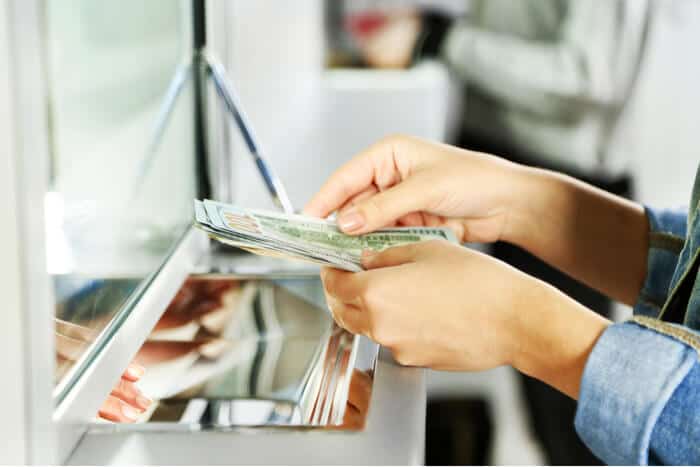
Whatever option you use to establish economic ties in Panama, you must also provide proof of economic solvency. This is done by opening a Panama bank account and depositing at least $5,000.
To open an account in Panama, you must provide two bank reference letters, two personal reference letters, a financial report, proof of business or personal income, a copy of your passport, and a copy of your driver’s license or another form of identification.
You also need to write and address a letter to the bank explaining your reasons for setting up the account, the banking services you will need, and the estimated average balance, and any regular monthly deposits and withdrawals.
You should also provide proof of some connection with Panama. Though you may not have to present a utility bill, you will need to offer some type of evidence. Often, a letter from your lawyer explaining that you are going through the immigration process will suffice.
The bank may also require you to present your tax returns from the last few years and the bank official might ask you to discuss your business activities and explain your income source(s). And then, of course, you will need to fill out a bunch of forms.
Panama has over 90 banks but not all of them have an international license and many of them will not accept Americans. Be prepared to interview at a couple of banks in the case that you are rejected at one thanks to your nationality. That said, here are some of the more well-known banks, many of which accept American clients:
- • Atlas Bank
• BAC International Bank (however, you must first be an official Panama resident) - • Banco Aliado
• Banco Azteca - • Banco Nacional de Panama
• Banistmo - • Banesco
• BLADEX - • Canal Bank
• Capital Bank - • Citibank (if you already have an account in your home country)
• Global Bank - • GNB Sudameris Bank
• PKB Banca Privada - • Scotiabank
• Towerbank - • Unibank
A Word of Caution: Even if you can open an account with one of these banks, it is no guarantee of the quality of service you will receive. Sonja, my team member who handles banking, says that some of our clients have shared that Panama banks are not as robust as the banking options available in Europe and Asia.
Some banks do not even provide online banking and everything must be done in cash in the branch. A couple of years ago, everyone was using Banco Azteca for their residency, but it’s the kind of bank that lends people money for refrigerators!
If you’re not looking for a great bank to use long-term, it may not be a problem to set up an account with a bank like this just to get your residence. As with setting up a corporation, it is perfectly fine to discontinue your use of your new bank account once you have received your residence permit. You can even remove the $5,000 from your Panama bank account as soon as you have applied for the Friendly Nations Visa.
If your goal is to find a quality offshore bank to use on a regular basis, we would look outside of Panama. Panama used to have some of the best offshore banks in the world before the tax justice crusaders at the OECD slapped Panama on a gray list of “opaque” banking jurisdictions and Panama responded by signing information-sharing agreements.
The OECD came back for more and Panama ended up eliminating any kind of bank secrecy benefits and, to be honest, any other benefit to banking in Panama. Panama banks were never on my list of favorite places to hold an offshore account. They are fine, but they are not the best. And here at Nomad Capitalist, we live by the words, “Go where you’re treated best.”
REQUIRED DOCUMENTATION
All of the documents that you submit for your Friendly Nations Visa application must be valid, authenticated, and translated. Validity simply means that the document was issued within 90 days of the application.
You can authenticate a document either by having it apostilled through the Secretary of State Department in your home state or by having it authenticated by the Panamanian Consulate in the country of issue.
If your documents are in any language other than Spanish, you must have them translated by a qualified translation agency and notarized.
The documents you must submit are as follows:
MAIN APPLICANT
- • Passport
• Eight passport size photos - • Criminal history background check
• Copy of the second ID from the applicant’s country of origin - • Medical certificate of good health issued in Panama by a qualified doctor (often handled by the lawyer’s office)
• Proof of professional and economic ties (see above) - • Proof of financial solvency
• Proof of address (notarized rental contract, property title, or letter from the hotel) - • Various application forms
• Certified checks (see Program Costs section) - • Proof of legal residency if the applicant is only a resident of a friendly nation
ADDITIONAL DOCUMENTS FOR DEPENDENTS
Qualifying dependents include the applicant’s spouse and any children under 18. Children up to 25 years old can also qualify if they are both unmarried and current full-time university students.
Spouse
- • Passport
• Eight passport size photos - • Marriage certificate
Children
- • Passport
• Birth certificate - • A personal sworn affidavit written by the main applicant explaining the purpose for seeking permanent residence in Panama and the ability to support all dependents
• If the main applicant is the only parent on the application, a letter from the other parent authorizing their child’s application - • If the dependent child is over 25 years old, a sworn affidavit confirming their single status and proof that they are enrolled as a full-time student.
DOCUMENT EXPLANATIONS
The criminal history background check must be issued from the applicant’s country of origin or the country where he/she has lived for the past two years. It must be issued by a federal, central, or national police force or criminal investigation authority. You can learn how to obtain an FBI background check here.
If you provide a background check from another country, you must also provide an ID from that country. If the report comes from a country where you are a resident and not a citizen, you must provide the legal residency identification of that country. If you have lived in Panama for the last two years, the background check must be prepared by the national police in Panama.
Regardless of where they are issued, most criminal history background checks are valid for 3-6 months. You should also note that you can only have one entry stamp in your passport for Panama following the date that your criminal history background check was issued.
To prove financial solvency, you should provide a bank reference letter from a licensed bank in Panama addressed to the “Servicio Nacional de Migración” that certifies that you have deposited at least $5,000 USD in a personal bank account (plus an additional $2,000 per dependent).
If you are not married but live with a partner in common law, you cannot apply together because Panamanian law requires an apostilled or authenticated marriage certificate. You can, however, file separate applications.
Finally, if you do not possess a second form of ID from your home country, you can provide an apostille or authenticated birth certificate.
FRIENDLY NATIONS VISA COSTS
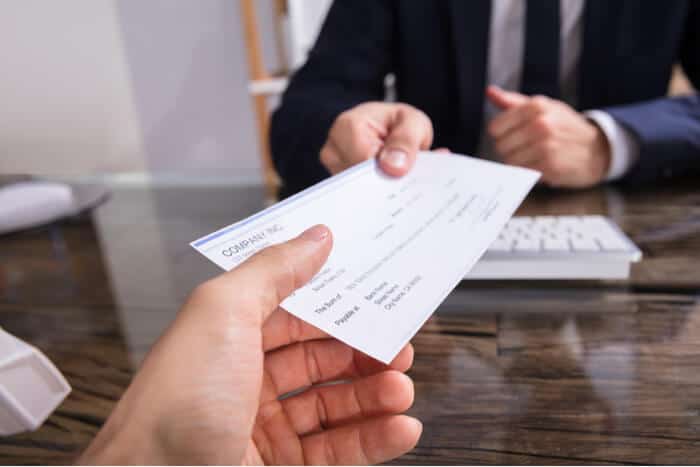
Along with your application and the corresponding documents, you must also submit two certified checks. The first applies to all applicants over the age of 12 and covers the costs of deportation if you were to commit a crime in the country and Panama needed to kick you out. The second is the basic application fee and must be paid by all applicants.
- • A certified check for $800 (per applicant) written out to the National Immigration Service
• A certified check for $250 (per applicant) written out to the National Treasury
You should also consider other costs including legal fees, multiple entry visas, incorporation, opening a bank account, translations, etc. While prices can vary and change with time, the following is a good estimate of expected costs:
- • Company incorporation = $900 – $1,600 for year one,
• Yearly company registration for all following years = $500 – $1,200 - • Dissolution of a company = $1,000
• Multiple entry visa, ID documents, translations, etc. = About $600 - • Banking services = $250
• Attorney fees = $2,000 - • Bank deposit $5,000+
In all, you should plan on spending at least $10,000 for a single applicant and more if you are including dependents on your application. However, you will be able to recover the $5,000 bank deposit almost immediately.
A STEP-BY-STEP APPLICATION GUIDE
Step One: Document Preparation – You can save yourself a lot of time in-country if you do much of your document preparation before arriving. You can gather all of your documents and get them apostilled and/or authenticated as well as translated. If you have a lawyer on the ground in Panama, you can also set up your company, pay government and attorney’s fees, and send your $5,000 for your bank deposit to an escrow account.
Step Two: Travel to Panama (First Visit) – Your first visit to Panama will take anywhere from one to three weeks depending on how much work you did beforehand as well as how busy the immigration offices are at the time of your visit. The objective of this visit is to set up your bank account and file your application for the Panama Friendly Nations Visa. You must be physically present to accomplish both objectives.
If you have multiple citizenship, be sure to enter Panama using the same passport that you will use for your application and ensure that it is stamped upon arrival. The immigration officials will need to see this when they process your application. Once in the country, you will meet with your lawyer to review your documents and prepare for the next steps.
Step Three: The Bank – You will need to set up your bank account before you can continue with any of the next steps. Be prepared to interview at a couple of banks in case your account is denied by one. Once you find a bank that will accept Americans, you will get interviewed by the banker, submit your documentation and sign all bank forms.
You can also make your deposit at this time as well as obtain your bank reference letter. Technically speaking, you could withdraw the $5,000 as soon as you have a bank statement in hand showing proof that you made the deposit, but it may be safer to wait until your residence has been approved before withdrawing the funds.
Finally, you will be able to request all of the certified checks that you will need for your application at this time (two total if you are the sole applicant, more if you have dependents).
Step Four: Passport Registration – You will need to register your passport with the Immigration office in Panama City before submitting your application. It is not a time-consuming process in and of itself, but if the lines are long it could take up a good part of your day, so plan to be there early.
Once you are admitted, the immigration officer will place a stamp in your passport that contains a registration number that will be used throughout the immigration process. Once your passport is returned to you, be sure to keep a photocopy of your passport and the entry stamp page with you at all times while you are in Panama.
Step Five: Submit Your Application – Surprisingly, you do not have to be present the day you submit your application. Depending on the law firm that you work with, they might do this for you. If not, you will need to set up an appointment to file your application and all of the corresponding documents.
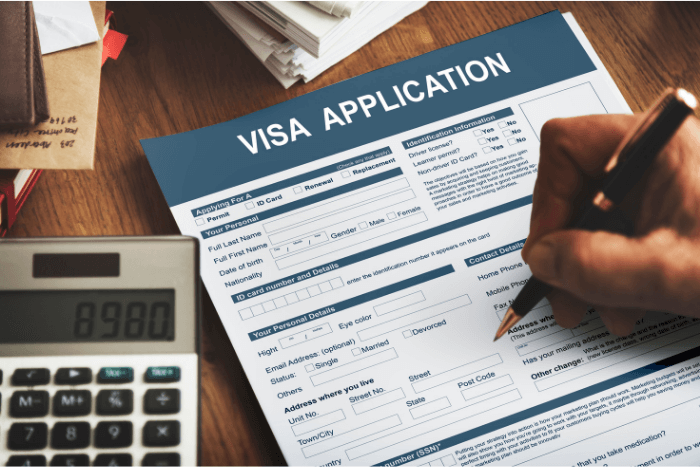
Step Six: Receive Your Temporary Residence Card – The day after you submit your application, you will go into the immigration office to have your photograph taken for your temporary residence card. The card will be produced and delivered to you during the same visit and will be good for a total of six months. If your temporary residence is approved, you will be eligible for permanent residence after 2 years.
Step Seven: Request and Obtain a Multiple-Entry Visa – Once you have your temporary visa, you will need to request a multiple-entry visa in order to leave the country without incurring a $2,000 fine. You will need to leave your passport with the Panama immigration office for about three business days so that they can issue this visa.
Note: A multiple-entry visa is only required when a foreigner begins a process to obtain Panamanian residency and leaves the country before the Servicio Nacional de Migración provides a resolution to the application. If you are not going to leave Panama before you get your residence card, you do not need a multiple entry visa. You may, however, need to extend your tourist visa if it will expire before your case is resolved.
Step Eight: Wait for Your Application to be Approved – Once you have submitted your application, the immigration office will take between three to six months to process and approve it. If it is approved, you will be eligible for permanent residence after 2 years.
Step Nine: Travel to Panama (Second Visit) – Once your provisional residence card is ready, you can travel to Panama for the second time to complete the residency process. This can take as little as three days. Only after 2 years will you be eligible for being a life-long permanent resident of Panama and can officially report Panama as your country of residence on your passport.
Step 10: Other Documents/Permits – You are only eligible for a permanent residence after 2 years of having the provision residence. You can apply for other documents such as a Panamanian driver’s license and a work permit. While the driver’s license will take very little time to process, it will take a bit more time to acquire a work permit.
However, Panama’s president has ordered the Ministry of Labor (MITRADEL) to fast-track the acceptance of work permits from Friendly Nations visa-holders. The process usually takes about one to two months and is entirely separate from your residence. You will need to apply for the permit with the Ministry of Labor and pay all corresponding fees to them.
A month or so after you receive your residence permit, you can also request an optional residency card issued by the civil registry called an e-cédula. This is a national ID card available to all Panamanians that works not just as a valid identification document but also as your official tax ID.
PANAMA PERMANENT RESIDENCY VS. PANAMA TAX RESIDENCY
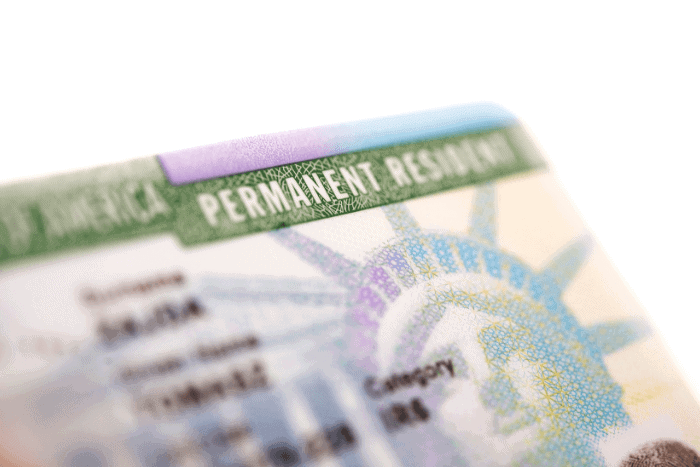
This brings us to a very important clarification: getting Panama permanent residency will not automatically make you a tax resident. In fact, getting the e-cédula and having a tax ID isn’t enough, either.
With the Friendly Nations Visa, Panama is offering a permanent residence, not tax residence.
I have come across people who have mistakenly believed that, by having a Panama permanent residence, they can now go back to the US and live there for part of the year and not pay any US taxes
They are in for an unfortunate surprise.
You can become a tax resident of Panama and it could be very helpful for your particular situation, but just being a permanent resident of Panama and spending the one day every two years required to keep your immigration status active does not help you with taxes anywhere.
You must meet two all-important criteria before you can be considered a tax resident of Panama:
- • Spend at least 183 days in a tax year in Panama
• Provide proof that you have a permanent home in Panama
If you meet these qualifications, you can request a tax residency certificate by presenting the following documents:
- • Your e-cédula
• A notarized copy of your passport - • Proof of address (e.g., utility bill, rental contract, etc.)
• Evidence of economic activity that generates income in Panama - • Evidence of residency status
You must also specify the tax year for which you want to be a tax resident and detail which tax treaty you want to apply.
Having a tax residence in Panama should only be a priority for a US person trying to prove that they have a bona fide residence outside of the United States, or for citizens of many western countries who want to avoid the nomad tax trap by proving that they have tax residence elsewhere so that they can be free of their tax obligations at home.
For everyone else, you should be fine with your regular Panama permanent residency. As mentioned, you only need to visit the country once every two years in order to maintain your residence permit. That is a substantial improvement over similar programs in Latin America that often require you to stay in the country for most of the year.
However, if your ultimate goal is to obtain Panama citizenship, you’ll need to stick around for more than a few days every other year.
HOW TO GET PANAMA CITIZENSHIP
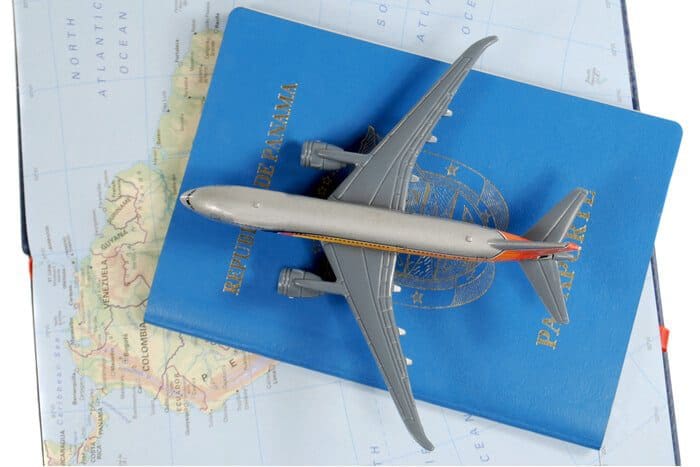
Although obtaining residency in Panama is rather easy, Panama citizenship is a different story. Aside from the requirement to spend most of your time there to qualify for citizenship, there is really no guarantee that you will actually get it once you apply. There is no Panama citizenship by investment program either.
This is the other misconception that people have: they read that you can apply for citizenship after five years of residence and think that this means that they can become a citizen after five years.
But that’s not what it says.
It says you can apply after five years. We know a couple that has been living in Panama for 15 years — actually living there — and their application is still sitting on some government worker’s desk.
When people come to me, we try to look at where things are actually working. Are we right 100% of the time? No. But we have a history behind me. We’ve opened up a new second residency program in Eastern Europe that leads to citizenship in three and a half years and we have a track record of it actually working. In Panama, on the other hand, the track record is that it doesn’t work.
If you are looking to create a strong second passport portfolio, a Panama passport might not be the best option for you either. This isn’t because the Panama passport isn’t decent — it is tied for 65th place on our Nomad Passport Index and gives you visa-free access to 141 countries, including the Schengen area, Russia, and all of Central and South America. And though Panamanian passport holders need a visa to enter the United States, they usually do not have any issues getting one. Plus, they can use the Global Entry program.
If you still want to apply to get a Panamanian passport, you will need to show that you have a connection with the country, such as having a permanent home there, spending the majority of your time in Panama, being able to speak some Spanish, and knowledge of Panama’s history, culture, and values. Panama dual citizenship law permits having multiple passports, so you don’t need to renounce your original one.
You will need to attend an interview, provide numerous documents, take an examination of the Spanish language and of Panama’s history and geography, appear before the governor of the Province of Panama to swear the Panama Constitution, register as a Panama Citizen before the electoral tribunal, and pay all related fees.
THE DOWNSIDES OF PANAMANIAN RESIDENCY
Most of the information you can find on Panama’s residence programs these days comes from folks whose entire business depends on selling you a Panamanian residence.
Fortunately for you, that’s not how we do things at Nomad Capitalist.
Our business model is founded on looking at all the facts and your personal needs and circumstances to find the best option for you. We’re not focused on selling one program over another, we’re focused on you. And that means looking at the downsides of these programs as well.
A lot of people talk about how easy it is to get your second residency in Panama; they’re right in some respects. If you are from one of the friendly nations on Panama’s list, you are almost guaranteed Panamanian residency.
It’s easy.
But if it’s easy and doesn’t solve your problems, then who cares? Don’t jump in just because it’s easy.
For one, you’re only getting “easy” according to one definition. Yes, it’s cheap and the program is relatively straightforward and doesn’t require a whole lot of commitment on your part once you have obtained your residence permit.
But, we have found that the relaxed pace of life in Latin America also affects the government and their processing time for, well, pretty much everything.
Dealing with this can become exhausting, confusing, and frustrating.
It is also hard to find reliable people to work within these countries. (We’ve managed to find the best, but it wasn’t easy to do.) Finding a good lawyer who sticks to the laws is a monumental task because, unlike in most countries, laws are a bit more… flexible in Latin America in general.
Because regulations change so frequently, it’s hard to know what you can depend on and whether or not you can trust your lawyer when the law doesn’t always match reality. There is a constant sense of legal ambiguity and it can seem at times that everything is subject to change.
For example, back in 2014, Panama’s government briefly removed their territorial tax system, which then allowed them to tax local companies on their worldwide income at the regular 25% tax rate. This would have been a devastating blow to anyone with an active Panamanian business. The government fixed the “accident” quickly, but it shows that nothing is perfect or permanent.
So, while you do not have to fork up tens of thousands of dollars for residency in Panama, you may still run into hurdles trying to navigate the bureaucracy and deal with the constantly changing rules, increased paperwork, lengthened processing times, and poor track record.
KNOW WHAT YOU NEED
There is a lot of hype surrounding the Panama Friendly Nations Visa and there are many good reasons for this, but it is not a silver bullet. You should not pursue a program like this solely for the sake of convenience. You need to consider your end goals first.
Do you want to live in Panama? Or do you just want the residence permit? Or are you looking for the perfect tax residence? Depending on your situation, Panama might not be the right tax residence for you. There are plenty of other places where you could enjoy zero tax instead.
If you are determined to pursue a residency in Panama because it is the cheapest option you have found, reconsider. You will make yourself vulnerable to scams with a mindset like that, especially in a place like Panama where there is such a large demand for its easy residence program.
Knowing what you want enables you to build a solid, holistic strategy to increase your freedom and decrease your taxes so you can keep more of your money and enjoy an abundant life.
Panama has a lot of advantages, especially for US persons and Canadians who want to leave their home country without wandering too far. Opportunities abound in Panama’s emerging market for business, real estate, and even banking. If you don’t mind the comparatively higher cost of living, it’s not a bad tax advantage place to live and it’s not a bad permanent residence to have in your quiver.
Just know that it’s not the catch-all that everyone says that it is. The Panama Friendly Nations Visa is a great second residency with minimal physical presence requirements in a business-friendly jurisdiction. If it is what you need, it is a decent program for a great price.


How to Get UAE Citizenship – The Complete Guide
Sovereignty – both national and personal – shapes ambition, secures wealth, and defines status in a shifting global order. For the high-achieving global citizen, acquiring a second or even third passport is more than a lifestyle upgrade; it’s a strategic move in long-term financial and geopolitical positioning. But not all citizenships are created equal – […]
Read more

A Gateway to Central Asia: New Kazakhstan Golden Visa Program for 2025
Central Asia just raised the stakes in the golden visa game. In May 2025, Kazakhstan officially launched a 10-year Golden Visa program in an ambitious move to position the country as a serious contender in the global investor migration space. At a time when other international regions are rolling back their citizenship and residency options, […]
Read more

Top Countries Offering Golden Visas in 2025
Residency is no longer about lifestyle – it’s about leverage In an increasingly unpredictable world, Golden Visas offer something most governments can’t: certainty in exchange for capital. They are more than migration tools; they are strategic safeguards offering residence rights, future citizenship, global mobility, and access to tax-friendly jurisdictions. For investors, entrepreneurs and globally minded […]
Read more




